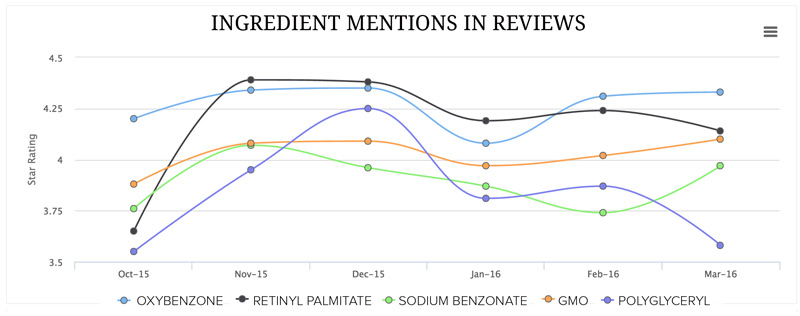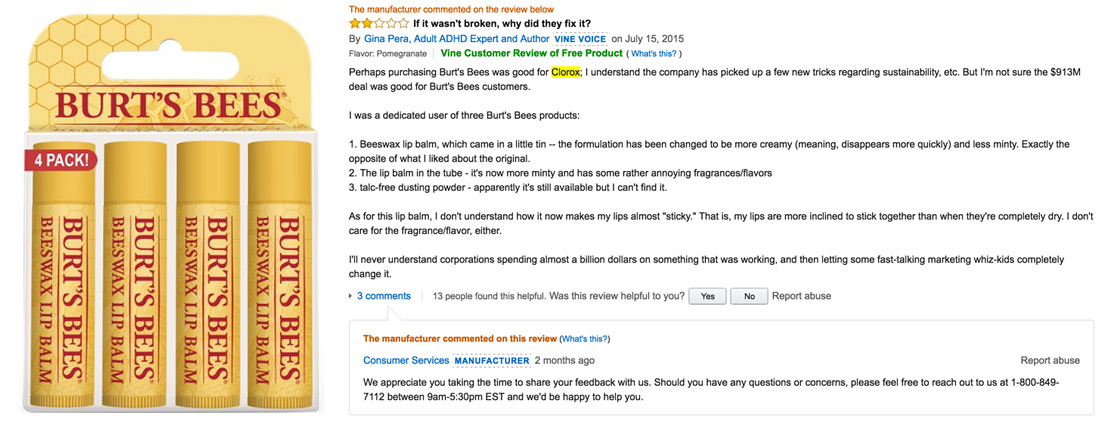A week after the Environmental Working Group released its Annual Guide to Sunscreens, the news that 75% of the products out there offer poor protection or have “worrisome ingredients” has gone viral. The article has been picked up by Mother Jones, Live Strong, Cosmopolitan, countless news sites, blogs and social media profiles – especially moms wondering which sunscreen is best for their kids.
This is the latest in a long line of consumers pushing manufacturers to use better ingredients. It’s a long road, but it seems that once enough consumers are behind the movement, brands start to listen and make the necessary changes.
Who’s The Boss? Consumers.
You may recall the Subway yoga mat saga. Subway got a lot of attention when an online petition from Food Babe blog urged the food chain to remove the controversial ingredient azodicarbonamide from its bread. It was signed by tens of thousands of concerned citizens. The chemical is a plastic-based compound that is (or was) found in many bread products to improve dough and maintain bread texture. It’s also used in products like shoe soles and yoga mats. In response to consumer feedback, in 2014, Subway announced it would remove the plastic-based chemical from its bread.
 In 2007, Clorox purchased Burt’s Bees for $925 million. A long way to come for the bee-keeping couple who started making candles out of leftover beeswax in the 1980’s. In 2006, Colgate-Palmolive bought Tom’s of Maine. In both instances the new corporate owners claim to have retained the integrity of the original ingredients. But, in both instances, product reviews written by consumers are bashing ingredient changes for the worse.
In 2007, Clorox purchased Burt’s Bees for $925 million. A long way to come for the bee-keeping couple who started making candles out of leftover beeswax in the 1980’s. In 2006, Colgate-Palmolive bought Tom’s of Maine. In both instances the new corporate owners claim to have retained the integrity of the original ingredients. But, in both instances, product reviews written by consumers are bashing ingredient changes for the worse.
Regardless of who is right in the great natural ingredient debate, the bottom line is that these reviews are likely affecting sales. Since 90% of shoppers read product reviews when making a purchasing decision, Clorox can push out all the feel-good advertising it wants. Shoppers aren’t buying it. They trust the opinions of other consumers over nearly every other decision-making factor, especially brand-generated advertising.
When Brands Should Alter Ingredients
When is the tipping point when brands should start making changes based on consumer opinion? There’s really no magic number for this decision, but brands have to weigh their ingredient cost against consumer opinion. To do this, brands must measure their reviews across different sites, or they won’t be able to quantify the collective opinion about their ingredients.
For example, with Channel Signal, a brand like Clorox/Burt’s Bees could aggregate reviews from Amazon, Walmart, Target, Walgreens and BurtsBees.com. Those reviews would go into a single analytics platform populated with graphs, charts, search and filter tools. From there, the company could garner how many reviewers were discussing the term “ingredients” or “changes”. They could even search by specific ingredient, such as “sodium benzonate” or “gmo”.

Once the chatter about these topics reaches a certain point, a brand can no longer move full speed ahead without feeling the effects that peer-to-peer conversation brings.
And articles like the EWG Sunscreen Guide only propel the chatter. The more people are aware of questionable ingredients, the more they care and perpetuate the message.
The upshot here? The only way to know when to make a change is to monitor product reviews with a service such as Channel Signal.
Side Note: How Not to Respond to Product Reviews
Take a look at this thoughtful review left by a Burt’s Bees customer. Clearly the customer had previous loyalty to the company and is now agitated by product changes that aren’t jiving with her. She left it all out on the table, only to get a response from the company that they she can call their 1-800 number to leave feedback. Well, Burt’s Bees has it all wrong here. She just left her feedback. Don’t make her take another step to get her comments into your business feedback loop. Gina is clearly an influential reviewer and 13 people marked this review as helpful. How many countless others have seen it and turned to a different product?
 The irony here is that it does appear Burt’s / Clorox has cleaned up the ingredients since many of these reviews were left. But the reviews still show at the top because they were marked as being most helpful. But wouldn’t that be the best possible response here? “We have listened to your feedback and have made the necessary changes to our ingredients.” If that were the response, Burt’s might just have a customer for life, and endless new ones who read and appreciated the responsiveness on the company’s part.
The irony here is that it does appear Burt’s / Clorox has cleaned up the ingredients since many of these reviews were left. But the reviews still show at the top because they were marked as being most helpful. But wouldn’t that be the best possible response here? “We have listened to your feedback and have made the necessary changes to our ingredients.” If that were the response, Burt’s might just have a customer for life, and endless new ones who read and appreciated the responsiveness on the company’s part.
